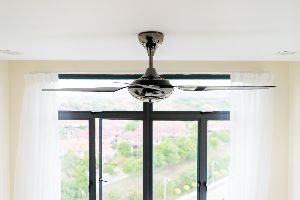
When water escapes plumbing or the great outdoors, it can cause big-time problems inside your home. Besides warping wood, staining walls, and soaking insulation, water can spark mold and mildew growth quickly, staining surfaces, creating odors, and harming indoor air quality. However, by knowing a few critical water damage repair steps, you may be able to halt the growth of these dangerous organisms. Here are a few ways to prevent mold growth after sustaining water damage.
Avoiding Mold Growth After a Flood
1. Dry Areas Quickly
Studies have shown that mold and mildew can start to grow on saturated surfaces as soon as 24 hours after a flood, so focus on removing standing water as quickly as possible. If the flood is localized, use towels or other dry fabrics to sop up the moisture and wring the water out into bathtubs or sinks. For floods that have filled a room with a small amount of water, consider using a wet and dry vacuum to remove as much standing water as possible, then soak up the rest with dry towels. For larger floods, consider hiring a water damage repair company to pump water out of the space before drying surfaces.
2. Improve Air Circulation

When it comes to floods, evaporation is your friend. Increase air circulation in flooded rooms by opening doors and windows. Turn on ceiling fans, and switch the blower motor setting on your thermostat to 'on' instead of 'auto,' so the system runs continuously. By increasing airflow, you can encourage evaporation and allow humid air to move outdoors, so your home dries out faster. If you have carpeted surfaces, consider renting industrial air blowers. These systems are made to push air under the edges of the carpet to dry out the pad.
3. Sanitize Surfaces
Mold grows faster on dirty surfaces since it needs moisture and organic matter to flourish. Sanitize all surfaces water has touched in your home, including flooring, baseboards, and furniture legs. You can sanitize floors and walls with a solution of 3/4 cup of regular strength liquid bleach or 1/2 cup of concentrated bleach mixed with a gallon of water. Always spot test bleach solutions in a small, inconspicuous area to test for colorfastness before treating large areas.
If you have had an indoor flood and need water damage repair, turn to Apex Restoration in St Louis County, MO. Since 2014, these trusted professionals have helped home and business owners with everything from fire damage repair and flood disaster recovery to mold remediation and storm damage restoration. With a commitment to comprehensive repairs and excellent service, they can help you create a safer, more enjoyable space. Learn more about how they can help with water damage repair by visiting their website, or schedule a consultation by calling their office at (314) 614-4822.
About the Business
Have a question? Ask the experts!
Send your question

